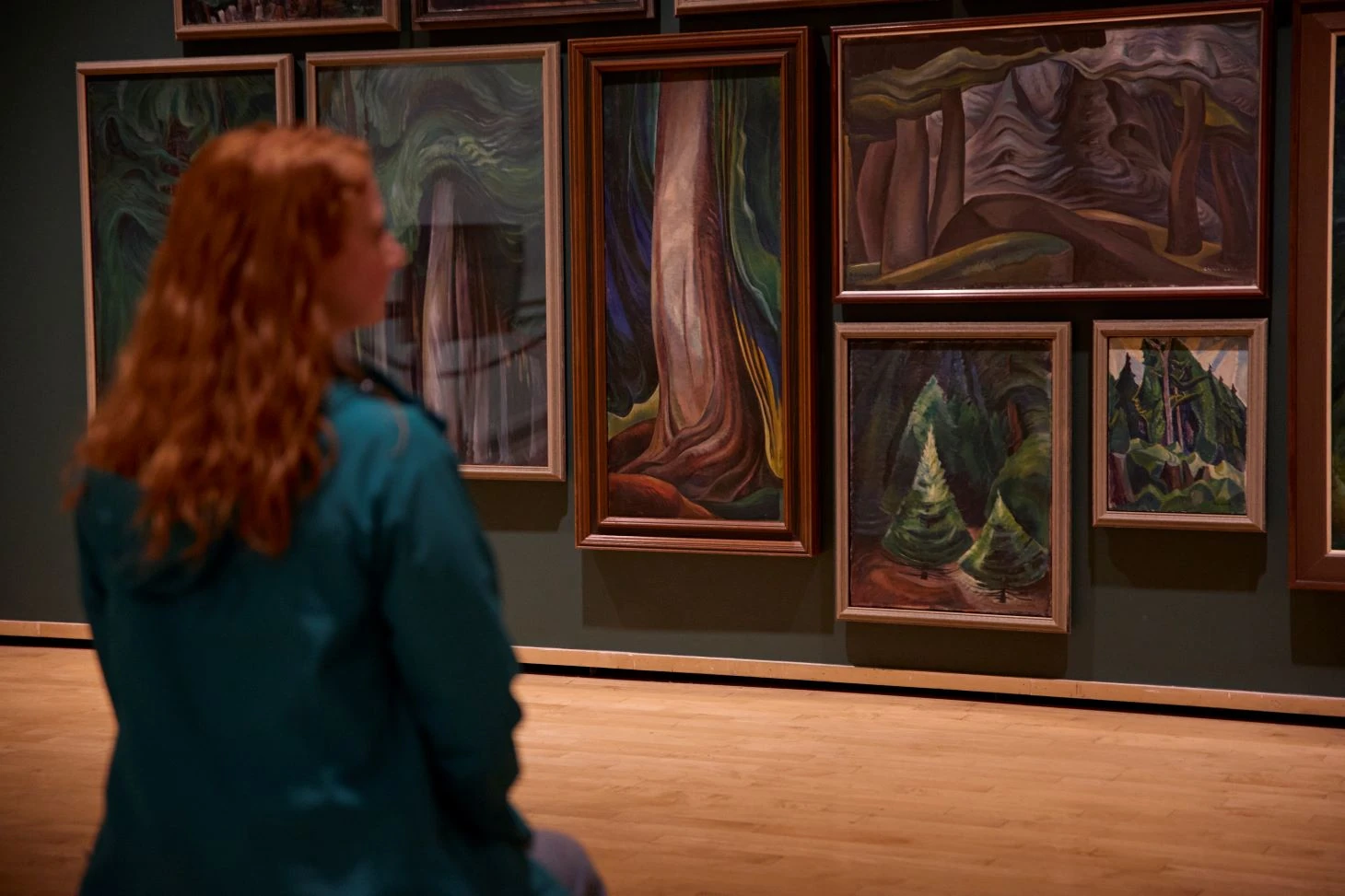Your Doctor Can Now Prescribe a Visit to the Vancouver Art Gallery
Through a groundbreaking new initiative, you could be prescribed a visit to take in the works of Emily Carr.

Since 2020, Canadians have been able to receive a prescription from their doctor to spend time in nature to improve their health through PaRx, a national nature prescription program founded by the BC Parks Foundation. Now, through a first of its kind initiative in collaboration with the Vancouver Art Gallery, a PaRx prescription includes access to a new exhibition of Emily Carr’s nature-based work at the gallery that runs until January 4, 2026.
Human beings have long found solace in nature and art, and myriad studies show that spending time both in nature and in museums and galleries has a positive impact on physical and mental health. Some of these benefits include restoring cognitive function and reducing stress and cortisol levels, according to a 2021 study published in The Journal of Positive Psychology. Studies show that some of these positive shifts can occur when simply viewing images of nature, too. A PaRx visit to see Emily Carr: Navigating An Impenetrable Landscape marries both of these worlds and is part of the gallery’s Art of Wellbeing Lab. The pilot project is dedicated to exploring how engagement with art can support well-being while making art and nature more accessible.

“The idea behind the lab was to connect art with the people who need it most,” says Sirish Rao, an interim co-CEO for the gallery. The paintings themselves, the bold, swirling blues and greens of the Northwest Coast forests Carr loved so much, and the way the exhibition has been curated encourage a mindfulness that the Art of Wellbeing Lab has termed “slow looking.”
“We’re actually referring to this as an indoor forest bathing experience,” says Paula Toledo, a mental health adviser and the lead well-being consultant at the Vancouver Art Gallery.
Instead of circumnavigating the room, most of the paintings are grouped together on one wall to mimic a forest. A guide that accompanies the exhibit asks visitors to spend at least 20 minutes contemplating the paintings, provides imaginative prompts for relating to the work, and then encourages people to take the experience out into one of the nearby provincial parks. “What the research says is that spending time in nature is great, but it’s the connecting to nature and how it makes you feel that’s most important,” Toledo says. “You can do that in the outdoors, or you can do that through Emily Carr’s artwork.”
In our frenetic, digital world, there’s also something inherently edifying about a space that asks us to slow down. In this way, the initiative is an antidote to the blockbuster art exhibitions where larger-than-life van Gogh sunflowers and trippy mirrored rooms seem created more for Instagram selfies than for any meaningful contemplation.
In addition to the physical health benefits that spending time with art and in nature provides, the Art of Wellbeing Lab also works to bring people who may be struggling with loneliness or isolation—which a 2023 U.S. Surgeon General report and the World Health Organization have noted can be as detrimental to our health as smoking 15 cigarettes a day—into a communal space. This is part of what’s known as social prescribing, which enables health-care workers to connect people to social and community services. The movement was first conceived by the United Kingdom’s Commission on Loneliness in 2016 and has now been adopted by over 30 countries worldwide, including Canada.

“Only 20 per cent of our health-care status in Canada comes from what we do in the health-care system, and the other 80 per cent depends on the environments we live, work, and connect in,” says Dr. Melissa Lem, the director of the PaRx program at the BC Parks Foundation and a key collaborator on the Emily Carr initiative. “Cultural spaces like the Vancouver Art Gallery are essential for making the health benefits of social connection more widely accessible—and when it involves nature-inspired art, these benefits are amplified.”
There is something innately calming about Carr’s work. All those deep kaleidoscopic shades of green feel good for the soul. And although the Vancouver Art Gallery has long exhibited a permanent collection of her paintings, this new initiative thrusts the early 20th-century Canadian icon back into the spotlight. “Her affection and engagement with the natural landscape still have gifts to give a century later,” Rao says.




